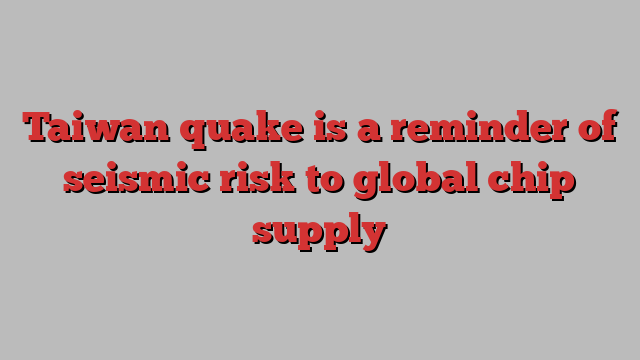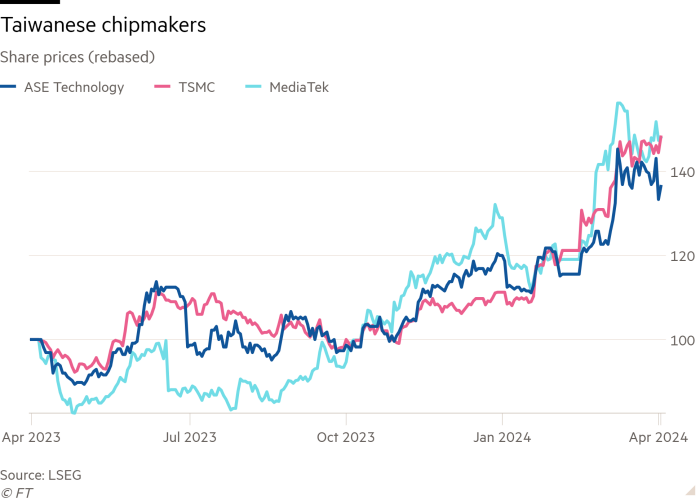
Unlock the Editor’s Digest for free
Roula Khalaf, Editor of the FT, selects her favourite stories in this weekly newsletter.
The strongest earthquake to hit Taiwan in 25 years has killed four and injured hundreds of people, damaging buildings and halting rail traffic. The quake on Wednesday off the island’s east coast, which had a magnitude of 7.2 , also forced the evacuation of semiconductor manufacturing plants. That is a reminder of how exposed the world’s chip supply is to seismic risk.
Taiwan Semiconductor Manufacturing Co, the world’s largest maker of advanced chips, stopped some chipmaking machinery and evacuated staff from facilities after the quake. Smaller local peer United Microelectronics Corp has also shut down machinery and evacuated staff at certain facilities.
Technological advancements in chip fabrication plant building in recent years have helped lower the risk of disruption and damage from earthquakes. Still, the high levels of precision required to make semiconductors means earthquakes remain a serious challenge to the industry.

Chip production is highly vulnerable to external shocks and contamination from foreign particles including dust and debris. The smallest vibration during the chip manufacturing process which uses photolithography could severely alter batches of chips, resulting in a higher percentage of chips that malfunction or are of low quality.
At present, nearly three-quarters of the world’s chip fabrication plants are in Asia. When it comes to advanced chip manufacturing, nearly all of that capacity is in Asia. Moreover, many of those plants are in areas prone to earthquakes. Taiwan and Japan, two countries considered high-risk for seismic activity, are home to nearly 200 fabrication plants.
Taiwan, where 42 active faults have been identified, lies along the Pacific “Ring of Fire”, the line of seismic faults where 90 per cent of the world’s earthquakes occur. South Korea and China, which are considered moderate-seismicity regions, account for most of the rest.
Indeed, it may be no coincidence that TSMC and Samsung chose Arizona and Texas as the locations for their US plants, areas that have low seismic hazard risk. Intel also has fabs in Arizona. Shares of TSMC and peer MediaTek are up about 50 per cent in the past year reflecting expectations of high artificial intelligence-related demand.
Disruptions to global chip supply cannot be ruled out, even if no damage is found at chipmaking facilities. Plants are typically shut down for weeks for inspections; the complicated process of restarting a chip production facility can take up to two weeks.
Diversifying production capacity would not just lower the risk from geopolitical tensions but from seismic activity as well.